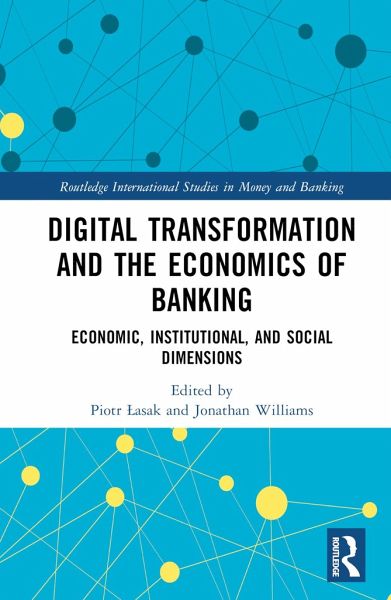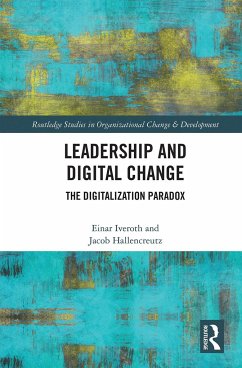
Digital Transformation and the Economics of Banking
Economic, Institutional, and Social Dimensions
Herausgegeben: Lasak, Piotr; Williams, Jonathan
Versandkostenfrei!
Versandfertig in 6-10 Tagen
154,99 €
inkl. MwSt.
Weitere Ausgaben:

PAYBACK Punkte
77 °P sammeln!
The book provides deep insight into the processes of digital transformation of banking according to economic, institutional, and social dimensions. Together with the transformation of incumbent banks, the processes result in changes in the scope of existing banking services. Moreover, new entities (FinTech firms) partner with incumbent banks and reshape the banking sector and its financial environment.The far-reaching transformation of banks and the banking sectors is accompanied by some institutional and socioeconomic processes. Regarding institutional processes, the book provides insight int...
The book provides deep insight into the processes of digital transformation of banking according to economic, institutional, and social dimensions. Together with the transformation of incumbent banks, the processes result in changes in the scope of existing banking services. Moreover, new entities (FinTech firms) partner with incumbent banks and reshape the banking sector and its financial environment.
The far-reaching transformation of banks and the banking sectors is accompanied by some institutional and socioeconomic processes. Regarding institutional processes, the book provides insight into the digitalization of the banking sector from a legal point of view. Traditionally, banking is strongly regulated by norms and rules and this status should be maintained when new entities are entering the sector and/or when new technological solutions contribute to the provision of banking services. Regarding socioeconomic processes, it must be highlighted that digitalization is exerting a powerful impact on societies. One significant example, among others, is the increase in the financial inclusion of disadvantaged groups (especially customers either underserved by the traditional financial sector or unbanked). The socioeconomic aspect, however, has a much greater dimension and its selected aspects are described in this book.
The principal audience of the book will be scholars in the fields of banking and finance, but also other related disciplines in the social sciences that are of particular relevance to the banking sector's digital transformation. This includes legal science, management, and psychology. The book also targets professionals in the financial industry interested in the impact of new financial technologies on banking sectors and bank services, particularly with a main focus on legal and socioeconomic dimensions.
Chapter 10 of this book is freely available as a downloadable Open Access PDF at http://www.taylorfrancis.com under a Creative Commons Attribution-Non Commercial-No Derivatives (CC-BY-NC-ND) 4.0 license.
The far-reaching transformation of banks and the banking sectors is accompanied by some institutional and socioeconomic processes. Regarding institutional processes, the book provides insight into the digitalization of the banking sector from a legal point of view. Traditionally, banking is strongly regulated by norms and rules and this status should be maintained when new entities are entering the sector and/or when new technological solutions contribute to the provision of banking services. Regarding socioeconomic processes, it must be highlighted that digitalization is exerting a powerful impact on societies. One significant example, among others, is the increase in the financial inclusion of disadvantaged groups (especially customers either underserved by the traditional financial sector or unbanked). The socioeconomic aspect, however, has a much greater dimension and its selected aspects are described in this book.
The principal audience of the book will be scholars in the fields of banking and finance, but also other related disciplines in the social sciences that are of particular relevance to the banking sector's digital transformation. This includes legal science, management, and psychology. The book also targets professionals in the financial industry interested in the impact of new financial technologies on banking sectors and bank services, particularly with a main focus on legal and socioeconomic dimensions.
Chapter 10 of this book is freely available as a downloadable Open Access PDF at http://www.taylorfrancis.com under a Creative Commons Attribution-Non Commercial-No Derivatives (CC-BY-NC-ND) 4.0 license.














